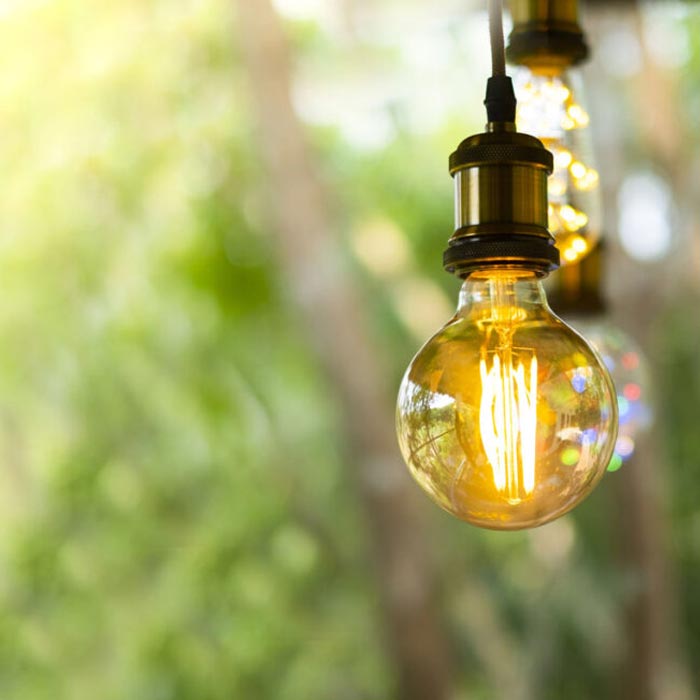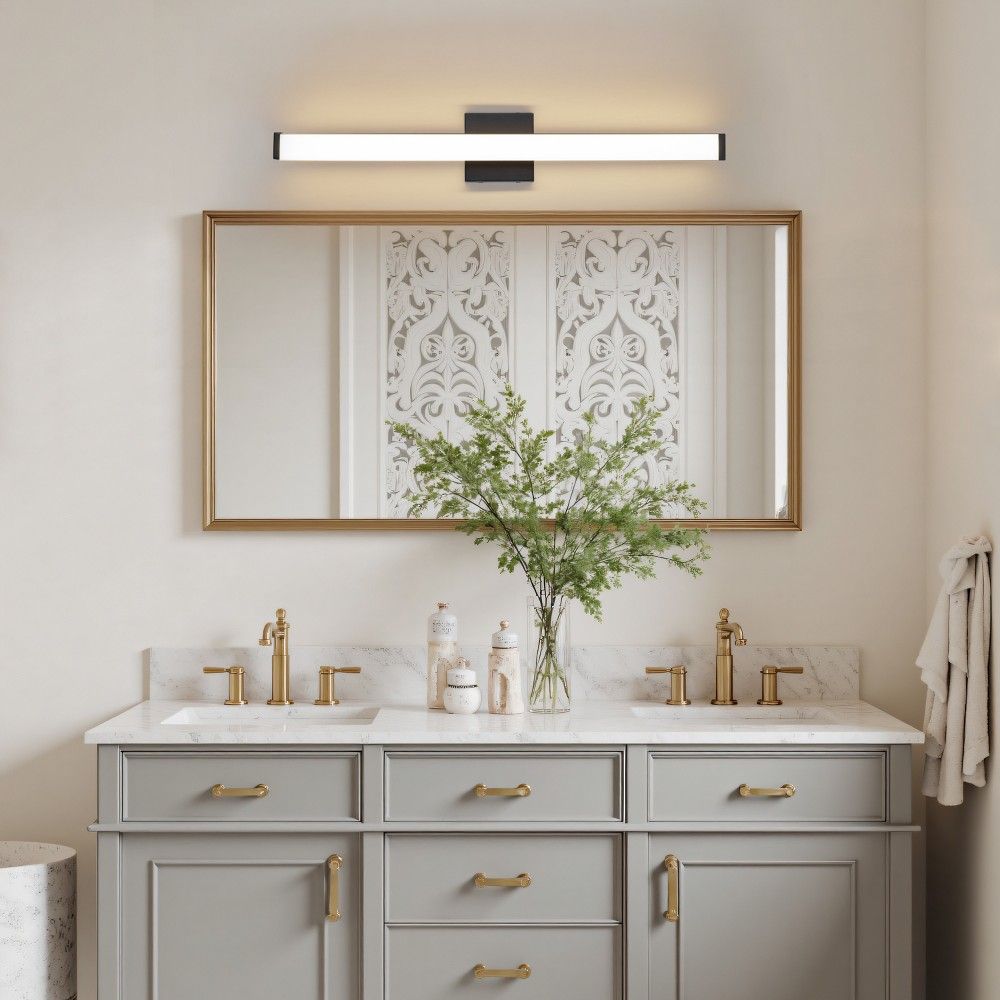
LED lights have become a popular choice for homeowners and businesses alike due to their energy efficiency, long lifespan, and cost-effectiveness. However, like any technology, LEDs come with potential concerns. One common issue that we often get is flickering LED lights.
There are a number of reasons why LED lights flicker. If your LED lights don’t flicker continuously, it might be a minor inconvenience. But does the flickering light indicate trouble? The answer is yes, flickering lights are often caused when the circuit is damaged or overloaded. There are a couple of other reasons that cause LED lights to flicker.
But no matter what the cause, one important question is whether flickering lights are dangerous or not. In this article, we explore the reasons why LED lights flicker. It also covers the potential dangers of flickering LED lights and what you need to know to stay safe.
What Causes LED Lights to Flicker?
There are a number of reasons that might cause LED lights to flicker. Here are these causes:
Voltage Fluctuations
LED lights require a consistent flow of electricity to operate properly. If there are utility issues like fluctuations in the power supply or the circuit being used for a high-power device like a drilling machine, the lights may flicker. When this is the reason for the LED light to flicker, it is not a sign of danger.
Incompatible Dimmers
Dimmers are a great way to adjust the brightness of your LED fixture, whether it’s a chandelier light fixture, pendant lighting, or any other type of setup. However, if you’ve added an old or incompatible dimmer with your LED bulb, the light might flicker when it is being adjusted. In this case, the dimmer needs to be replaced otherwise the LED light might be damaged or get overheated.
Faulty Wiring and Lose Connections
Poor wiring, loose connections, or damaged circuits can also cause LEDs to flicker intermittently. At times, if the bulb has a loose contact, it might flicker. If this happens, make sure to adjust the LED light properly to prevent sparking.
Low-Quality Bulbs
Cheaper or lower-quality LED bulbs may be more prone to flickering. The reason - the lack of necessary components like capacitors. Such LED bulbs don’t last long as well. To stay free from the hassle of replacing the damaged or flickering LED bulbs again and again, choose an LED bulb from a reputed seller, especially if you’re using them in a brass chandelier or glass pendant lights.

Can Flickering LED Lights Be Dangerous?
In most cases, flickering LED lights are not a serious safety hazard. However, issues like loose connections might cause sparks in the wiring, posing a fire risk. Here are the two dangers of flickering LED lights:
-
Health Concerns
While flickering LED lights may not directly cause physical harm, they can have an impact on people with certain health conditions. For instance:
-
Photosensitive Epilepsy: Flickering lights can trigger seizures in individuals who are sensitive to light. This is more common in people with epilepsy, particularly those who are prone to photosensitive seizures. Short-term exposure to any frequency between 3Hz-70Hz can result in seizures
-
Eye Strain and Discomfort: Continuous exposure to flickering lights, even at low frequencies, can lead to eye strain, headaches, or migraines. Flickering causes more discomfort for people who already suffer from these conditions. Apart from discomfort, flickering lights make it harder to concentrate for some people.
-
Fire Risk
Flickering caused by faulty wiring, damaged circuits, or defective bulbs can create a fire hazard. The consistent flickering can cause a disruption in the flow of current, causing sparks and overheating. Both these issues can lead to a fire.
If you notice consistent flickering that doesn’t resolve after replacing bulbs or adjusting settings, it’s a good idea to have an electrician inspect your home’s electrical system, particularly in areas like foyer light fixtures where wiring issues are more common. They could check the wiring in the fixture and the housing to get to the core issue.
How to Prevent LED Flickering?
If your LED lights are flickering continuously or without any reason, here are some ways that you can resolve the issue:
-
Check for Compatibility: If you're using dimmer switches, make sure they are compatible with LED lights. Look for dimmers that are specifically designed for LEDs.
-
Replace Faulty Bulbs: Sometimes, a faulty bulb can cause flickering. Replacing it with a high-quality LED bulb might solve the problem.
-
Check the Wiring: Loose wiring or damaged electrical components can also cause flickering. If you suspect a problem with the wiring or circuit, consult an electrician immediately.
-
Upgrade to Higher-Quality LEDs: Cheaper LED bulbs are more likely to flicker. Investing in higher-quality bulbs from trusted brands can reduce the chances of flickering.
If the flickering is being caused by voltage fluctuations, it is best to turn off the bulbs till it normalize. The flickering can damage the bulbs. Even if the LED bulbs aren’t damaged due to the voltage fluctuations, it might shorten their lifespan.
Unobservable Flickers
All devices that emit artificial light such as TVs, monitor screens, phone screens, and LEDs have a refresh rate. Lights that flicker under the range of 100Hz are observable by the naked eye. This type of flickering is the result of loose wiring or compatibility issues, as discussed above.
However, the unobservable flicker is present and is harmful to those with underlying health conditions. If you have health concerns, these unobservable flickers from LEDs might cause you trouble.
Some LED bulbs are specifically labeled as 'flicker-free' for those unobservable flickers, making them ideal for modern lighting trends in 2025 that prioritize both aesthetics and health

Conclusion
In most cases, flickering LED lights are not a major danger, but they should not be ignored. While the risk to health and safety is typically low, the potential discomfort for individuals with photosensitivity or the risk of electrical malfunctions should be taken seriously.
To prevent flickering, ensure that your LED lights are compatible with your setup. If there’s faulty wiring, make sure that you replace it before installing the bulbs since loose wiring is a serious fire hazard.
Light up your space with Yiosilamp! Explore our latest modern light fixtures and timeless vintage chandeliers to find the perfect match for your style. Shop now and transform your home with elegance and innovation!
FAQs
Is it safe to leave flickering lights on?
It is generally safe to leave flickering lights on. However, they might cause damage to the bulb since flickering lights can overheat its components. If the flickering is being caused by voltage fluctuations, it is recommended to turn them off. Excess voltage or low voltage might shorten the life of the LED light or damage it completely.
When to worry about flickering lights?
If your LED lights are flickering repetitively, it could be a sign of damage. In this case, it is advised to turn them off and check the wiring first for loose connections. You can try replacing the LED bulb in the light to see whether the housing has loose wiring or if there is an issue with the bulb. If it continues to flicker, you might want to seek expert help since the exposure might cause you headaches and shorten the life of your LED bulbs.




